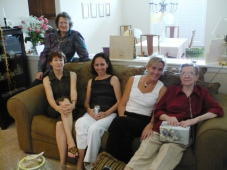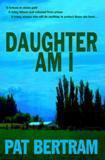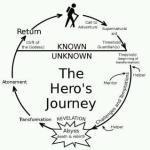Pat Bertram's Blog, page 242
February 27, 2013
Grief at Thirty-Five Months
![video[7]](https://i.gr-assets.com/images/S/compressed.photo.goodreads.com/hostedimages/1381645427i/5136529.jpg) Today marks the thirty-fifth month since the death of my life mate/soul mate, yet today is a day like any other. There is no particular upsurge in grief, no particular focus on his death or my loss (two separate things).
Today marks the thirty-fifth month since the death of my life mate/soul mate, yet today is a day like any other. There is no particular upsurge in grief, no particular focus on his death or my loss (two separate things).
This “acceptance” of the day is not a positive step forward so much as the combination of a couple of non-related factors. For one, I’m dealing with a major sinus infection, and upsurges in grief and upsurges in ill health don’t seem to happen at the same time, probably because both take an enormous toll on the body so one gives way to the other.
Even old grief, grief that is past the first year of raw pain, is stressful because you walk an unsteady path in an alien world, and you have to make mental compensations to travel that path, the same way you have to make physical compensations if your ankle is broken. During that first year, a person who has lost a spouse has 25% higher death rate from all causes than those who are not grieving, and even beyond that first year, the bereft seem to have a higher rate of illness since the stress of grief affects the immune system. (Sometimes it even seems as if there could be a bit of body/mind interaction, where the mind gets tired of grieving, and so allows the body to become sick, though that isn’t what happened in my case since I haven’t had a major upsurge of grief in a while, just upswings of sadness.)
The other factor involved in making this day less emotional than expected is that I’m looking after my aged father, who has taken a turn for the worse, and I find myself falling into the same mindset I had when I watched my life mate/soul mate die. In such a case, you take a step back from your emotions, wait to see what happens, do the best you can in any crisis, and bear the burden of helplessness as lightly as possible.
Seeing myself getting into this mental state again makes me realize that I did the best I could three years ago, that so much I regretted or felt guilty about was beyond my control. I’d work past those concerns, so they haven’t been haunting me lately, but now I have a graphic illustration of truth. I did the best I could for him, just as I will do the best for my father.
The thing I regretted most about my mate’s death is that I took it for granted. He was ill for a long time, and after a while, his dying became a way of life. I see that happening again, that my father’s aging and inevitable dying is becoming a way of life. My life.
The odd thing for me is that I’ve spent the last three years trying to embrace life again, to get away from the stasis of dying and grief, but now, willy nilly, I am back in neutral. Not looking forward. Not looking back. Just taking life each day as it comes, even if the day marks the thirty-fifth month of my grief.
***
Pat Bertram is the author of the suspense novels Light Bringer, More Deaths Than One, A Spark of Heavenly Fire, and Daughter Am I. Bertram is also the author of Grief: The Great Yearning, “an exquisite book, wrenching to read, and at the same time full of profound truths.” Connect with Pat on Google+
Tagged: grief and death, grief and illness, grief and stress, new grief, old grief, taking dying for granted, thrity-five months of grief


February 26, 2013
It Takes Courage to Grieve
 People have often mentioned how courageous I’ve been by writing about my grief, but the truth is, for the most part, it didn’t take any courage. At the beginning, I was in such incredible pain and bewildered by all I was feeling, that I tried to make sense of all the emotions and physical symptoms the only way I knew how — by writing.
People have often mentioned how courageous I’ve been by writing about my grief, but the truth is, for the most part, it didn’t take any courage. At the beginning, I was in such incredible pain and bewildered by all I was feeling, that I tried to make sense of all the emotions and physical symptoms the only way I knew how — by writing.
There were two times, though, where it did take courage. The first time was when my grief continued far beyond what I had expected, and I was afraid people would think I was weak or self-pitying or self-indulgent, unable to move beyond the tragedy. I am moving, but at my own pace.
The truth is, when you lose your mate, you lose not only the person who meant more to you than any other, the person who connected you to the world, you also lose your best friend, your confidante, your support, your sense of self, your hopes and dreams, your shared world, your faith in a universe that makes sense. The changes are so vast and so sudden, it can take years to process them all.
I’d been honest about everything I’d been feeling, so I continued telling the truth about my grief even when I thought it made me seem pathetic. No one wants to show a weak side to the world, but someone has to explain how grief works, to show the ramifications of a certain type of loss. We are steeped in a culture of couplehood. Many songs and movies extol the joys of meeting the one person who makes life worth living, yet when you lose that person, you are expected to continue as if it didn’t matter. Well, it does matter. And it matters more when you lose that person to death. It’s almost impossible to fathom the absence of a person who once breathed the same air you did, who was there through every crisis and triumph, and who now is simply . . . gone. (Well, if I’m going to tell the truth, then I should tell the truth. It’s not almost impossible. It’s totally impossible.)
I’m past worrying about how people see me and my grief, so I’m back to not needing courage to write about how I am doing. I’m just continuing to chronicle the journey of a woman who is trying to rebuild her life after an immeasurable loss, both the steps forward into hope and the steps backward into sorrow and tears.
The second time I needed courage was when I published Grief: The Great Yearning, the story of my first year of grief. It’s one thing to write about grief in the backwaters of the blogosphere, and a completely different thing to put my grief out there for the whole world to read. Well, the whole world isn’t reading the book, so that’s not an issue, but more importantly, those who do read my story find they are reading their own story. Although grief is unique to each person, the pain and angst and bitter losses are the same. And so is the way we make this unwanted and terrible journey . . . one step at a time.
And that takes courage.
***
Pat Bertram is the author of the suspense novels Light Bringer, More Deaths Than One, A Spark of Heavenly Fire, and Daughter Am I. Bertram is also the author of Grief: The Great Yearning, “an exquisite book, wrenching to read, and at the same time full of profound truths.” Connect with Pat on Google+
Tagged: grief and courage, grief and loss, Grief: The Great Yearning, loss of a soul mate, loss of a spouse, writing about grief


February 25, 2013
Are Book Trailers a Good Idea?
 Someone asked me for advice on how to get people to see his book trailer and then called me negative when I explained how difficult it would be. I admit I’m burned out when it comes to promotion. I’ve spent the past five years researching book promotion in all its many facets, tried hundreds of different things, and I still don’t know how to turn a sleepy seller into a best seller, though I know a lot about what doesn’t work, or at least what doesn’t work for me. Other people do the same sorts of things I’ve been doing and find a pot of gold at the end of the promotion rainbow, but I’m still searching for rainbow.
Someone asked me for advice on how to get people to see his book trailer and then called me negative when I explained how difficult it would be. I admit I’m burned out when it comes to promotion. I’ve spent the past five years researching book promotion in all its many facets, tried hundreds of different things, and I still don’t know how to turn a sleepy seller into a best seller, though I know a lot about what doesn’t work, or at least what doesn’t work for me. Other people do the same sorts of things I’ve been doing and find a pot of gold at the end of the promotion rainbow, but I’m still searching for rainbow.
Book promotion is a lot like the house that Jack built. You have a book you want to sell, so you create a video trailer to promote it. Then you have to promote the video that promotes the book you want to sell. Then, you join Facebook to get more viewers for your video, so now you have to promote your FB page that promotes the video that promotes the book you want to sell. And on and on and on.
Some people can just throw a book out there and make a fortune on Amazon, but the rest of us have to promote. Have to find a way to get people interested in us and then in our books. As I said in What Works When It Comes to Book Promotion?, the first authors to blog or use the various social networking sites to promote their books found a strong readership, but now all of those means of promotion are so common that they are simply an expected part of being an author.
It’s the same with book trailers. The first people who created book trailers to promote their books did well, but now video promos are just an expected part of being an author. Even if the video is great, the problem is getting people to see the video.
Sometimes people will stumble across a book trailer when they are surfing Utube, but it’s not as if people by the thousands will be searching for his book trailer. I wanted to hear Madonna’s “Playground” the other day, so I used the search function to find it since I knew what I wanted to listen to, but what if I didn’t know there was a song out there I’d like to hear? How do I find it?
The problem is, you have to promote the book trailer as assiduously as you promote the book. If I knew how to get people to see his trailers, I’d be good enough at promotion that I’d be selling millions of books.
Still, book trailers are a good idea, and the better they are made, the better they will do. I don’t want to discourage him from making his video because . . . who knows? His might catch people’s attention and go viral. At the very least, it will give him something other than the book itself to promote.
***
Pat Bertram is the author of the suspense novels Light Bringer, More Deaths Than One, A Spark of Heavenly Fire, and Daughter Am I. Bertram is also the author of Grief: The Great Yearning, “an exquisite book, wrenching to read, and at the same time full of profound truths.” Connect with Pat on Google+
Tagged: book promotion, book trailer, the house that Jack built, video book promos


February 24, 2013
Excerpt from LIGHT BRINGER by Pat Bertram
Description of Light Bringer:
 Becka Johnson had been abandoned on the doorstep of a remote cabin in Chalcedony, Colorado when she was a baby. Now, thirty-seven years later, she has returned to Chalcedony to discover her identity, but she only finds more questions. Who has been looking for her all those years? Why are those same people interested in fellow newcomer Philip Hansen? Who is Philip, and why does her body sing in harmony with his? And what do either of them have to do with a shadow corporation that once operated a secret underground installation in the area?
Becka Johnson had been abandoned on the doorstep of a remote cabin in Chalcedony, Colorado when she was a baby. Now, thirty-seven years later, she has returned to Chalcedony to discover her identity, but she only finds more questions. Who has been looking for her all those years? Why are those same people interested in fellow newcomer Philip Hansen? Who is Philip, and why does her body sing in harmony with his? And what do either of them have to do with a shadow corporation that once operated a secret underground installation in the area?
Excerpt from Light Bringer:
Where am I? A new foster home?
Philip supported his throbbing head in his hands and wondered if he’d live to adulthood.
Tamping down the pang of self-pity, he raised his head, and everything came clear. Or almost everything.
He knew who he was: the thirty-eight-year-old Philip, dressed in yesterday’s clothes. He knew where he was: the foldout bed in Emery Hill’s den. But he didn’t know how he got there. He remembered being in the car with the creature, flinging himself against the door—no wonder he felt so bruised—and the icy touch on his neck. Had it brought him back here?
He stood, rocking until he caught his balance, then staggered off in search of the coffee he could smell brewing.
When he entered the kitchen, Emery started and dropped the mug he had been removing from a cabinet. It came to rest at Philip’s feet. Wincing, Philip bent to pick it up.
“Jeeminy Christmas!” Emery exclaimed. “You about scared the intellect out of me. What are you doing here? I thought you went back to Denver. See what you’ve done? I’m already turning into a blithering idiot.”
Philip laughed, then cut it off and clutched his head.
“What’s wrong? Hangover?”
“Feels like it, but I haven’t been drinking.” Getting a mug for himself and pouring a cup of coffee, he wondered if he’d been drugged. He took a sip of the brew, which seemed strong enough to soften a stone, and barely refrained from spitting it out. “Tomorrow I make the coffee.”
“Fine,” Emery said absently, regarding Philip with narrowed eyes. “I always know when one of my students is in trouble. It’s time you told me what’s going on.”
“I was never one of your students.”
Emery waved away the remark. “Between the two of us we should be able to solve your predicament.”
“I’m not sure there is a solution. Right before I came here, two NSA agents came to my apartment.”
Emery shook his head as if to clear it. “I must have misunderstood. I thought I heard you say NSA agents.”
***
Where to buy Light Bringer:
Palm Doc (PDB) (for Palm reading devices)
Epub (Apple iPad/iBooks, Nook, Sony Reader, Kobo)
Tagged: Colorado, fiction, Light Bringer, mystery, novel, search for identity, Second Wind Publishing


February 23, 2013
Grief Is Unique to Each Person

My mother, far right, on her 60th wedding anniversary
Today is my mother’s birthday. She would have been 91 if she had lived. Her life wasn’t cut short, nor was her death a tragedy — she’d lived a long life, and for the most part, her death wasn’t particularly horrendous. And even at the end of her life, she managed to get one last wish — to reach her 60th wedding anniversary.
One of the things so confusing about grief is the various lengths of lives and loves. Do you feel more grief if you’d been together for 60 years as my parents were? Do you feel less grief if you’d been together a matter of months?
I was with my soul mate for thirty-four years before death took him. After he died, I’d look at couples like my parents, and I’d envy them their long togetherness, but then I’d look at couples who had been torn apart before they ever had a chance to settle into their lives, and I would be grateful for the years I had with him.
Despite my envy/gratitude, I’ve concluded that when it comes to the loss of a mate, the length of time you were together isn’t a factor in your grief because you always grieve the entire life — everything you had and everything you didn’t have. If you’ve been together for most of your life, there is more of the past to grieve. If you had little time together, you grieve for all you never had. And in my case, I grieved for both the past and the future.
Many other factors are more important than the length of time you had together when it comes to grief. The depth of the connection matters, as does the interdependency of your lives. If you count on two paychecks to pay the bills, for example, and one of those paychecks evaporates, financial fear adds to one’s grief. If you are each other’s support group, providing a sounding board or hugs when necessary, then the loss of that support when you need it most adds to grief. Complications in the relationship can add to grief because you lose any chance of ever smoothing things out. Quick deaths add to grief because of the horrendous shock, and long dyings add to grief because of all the guilt and regrets that built up. And if you lose your mate when you’re relatively young, then you face many years without him, which adds to your grief.
All of these things combine to make grief unique to each person, but what isn’t unique is the sense of loss, the yearning, the hanging on the best we can until life opens up to us once again or until we find peace at the end.
***
Pat Bertram is the author of the suspense novels Light Bringer, More Deaths Than One, A Spark of Heavenly Fire, and Daughter Am I. Bertram is also the author of Grief: The Great Yearning, “an exquisite book, wrenching to read, and at the same time full of profound truths.” Connect with Pat on Google+
Tagged: 60th wedding anniversary, adding to grief, complications of grief, depth of grief, envy/gratitude, grief and loss, interdependency


February 22, 2013
A Sweet Tale or a Horror Story?
 On Valentine’s Day, a Facebook friend posted an anecdote that I can’t get out of my mind: A man made his wife toast on their anniversary, and she got upset. “For 50 years,” she said, “you have given me the end pieces and I am sick of it. I hate the end piece!” The man was stunned by her outburst and quietly responded, “But that is my favorite piece.”
On Valentine’s Day, a Facebook friend posted an anecdote that I can’t get out of my mind: A man made his wife toast on their anniversary, and she got upset. “For 50 years,” she said, “you have given me the end pieces and I am sick of it. I hate the end piece!” The man was stunned by her outburst and quietly responded, “But that is my favorite piece.”
Everyone who commented on the anecdote thought it was a sweet story, but all I could see was the horror of fifty years of misunderstanding. In fifty years, she never once told him she hated the end piece? Never once, when she got upset at him for some other hurt, did she bring up the matter of the toast? Never once did he bother to find out what she liked? Never once did he watch her make toast and see that she didn’t fix the end piece for herself?
This anecdote does not portray a loving relationship. She is long-suffering and uncommunicative, unable to find a way to express her wants until the frustration overwhelms her and she bursts out in anger. It’s even possible the problem isn’t the end piece at all — if the only thing he does for their anniversary is make her toast, then maybe she is upset at the lack of flowers or gifts or a meal in a nice restaurant, and mentioning the toast was simply a way of letting him know she wasn’t happy. He, on the other hand, is self-absorbed and arrogant, assuming that just because he likes something, so does she. He also seems smug in his belief that by giving her his favorite piece he is doing something loving, when in fact he is disregarding her by not considering her wishes.
Somewhere along the line, every new couple runs into such a situation, where one repeatedly does something the other doesn’t like, and so they compare notes about likes and dislikes and the expectations each has of the other. Something as simple as toast preferences should have been mentioned long before it became an emotional issue. If a couple can’t find a way around this sort of misunderstanding in the first few years of being together, then their problems run much deeper than who likes what piece of toast.
Love is seeing the truth of each other. Love is witnessing each other’s lives. Love is being present to each other. If after fifty years he did not know what she wanted, it shows how little he saw of her. If after fifty years, she did not know why he gave her the end piece, it shows how little she saw of him. It seems like a cold relationship at best.
On the other hand, loving or not, apparently they deserve each other, and maybe that’s what kept them together all those years.
This anecdote illustrates one other thing — the value of showing rather than telling. If this anecdote were developed into a scene as part of a story, it would be a great way of showing the problems of the couple’s relationship rather than simply saying that they misunderstood each other. Or it could be an example of how much he loved her, as the anecdote was meant to be. That’s the beauty of showing — the writer merely presents the story. Readers interpret it through their own experiences, deciding whether it is a horror story or a sweet tale, and hence make the story their own.
***
Pat Bertram is the author of the suspense novels Light Bringer, More Deaths Than One, A Spark of Heavenly Fire, and Daughter Am I. Bertram is also the author of Grief: The Great Yearning, “an exquisite book, wrenching to read, and at the same time full of profound truths.” Connect with Pat on Google+
Tagged: expressing your wants, love is . . ., loving relationship, showing not telling, toast


February 21, 2013
Daughter Am I and The Hero’s Journey
 I fell in love with the concept of the mythic quest when I read Christopher Vogler’s book The Writer’s Journey, so much so that I knew I had to write my own quest story. I’m not one for fantasy, either in real life or genre fiction, so I decided to use the hero’s journey structure for Daughter Am I, my contempory novel of a young woman — Mary Stuart — who goes on a journey to learn about her recently murdered grandparents. Accompanying her are six old rogues — gangsters and conmen in their eighties — and one used-to-be nightclub dancer.
I fell in love with the concept of the mythic quest when I read Christopher Vogler’s book The Writer’s Journey, so much so that I knew I had to write my own quest story. I’m not one for fantasy, either in real life or genre fiction, so I decided to use the hero’s journey structure for Daughter Am I, my contempory novel of a young woman — Mary Stuart — who goes on a journey to learn about her recently murdered grandparents. Accompanying her are six old rogues — gangsters and conmen in their eighties — and one used-to-be nightclub dancer.
Developing so many characters at one time is difficult under normal circumstances, but the mythic journey archetypes helped me create the characters and keep them focused on their roles. Whether gangster or wizard, hit man or Darth Vader, the archetypes — and the power of the archetypes — are the same.
The hero is the one who grows the most in the story, who gains knowledge and wisdom. Heroism, in the mythic journey sense, is connected to self-sacrifice, risk, and responsibility. The hero must perform the decisive act of the story, though at the beginning, before their transformation, heroes often need to be goaded into action. Mary starts out only wanting to learn about her grandparents, and ends up becoming intensely loyal to the elders in her charge, which changes all of their lives.
A herald gets the hero started on the journey. Kid Rags, a dapper forger forced into retirement by computer technology, eggs Mary on, challenges her to find out more about her grandparents. Kid Rags is also a mentor, giving guidance and gifts, a role he shares with Teach. Teach is a con man who believes everything is a con, and he is not hesitant about sharing his vision.
Every mythic journey needs a trickster, a character who embodies the energies of mischief and a desire for change, and who provides comic relief. The trickster in Daughter Am I is played by Happy, an ex-wheelman for the mob. Happy wants to be on the move, is always urging action, and he peppers his talk with morose and unanswerable pronouncements about death. Did I mention that he carries a gun, but that his hands shake too much to be able to aim it properly? Poor sad Happy.
The shapeshifter is Tim Olson, Mary’s romantic interest. He doesn’t actually change shape, but he appears to change constantly from Mary’s point of view. He tempts, dazzles, confuses her, and makes her question his loyalty.
The shadow represents the energy of the dark side, the villain, and in the case of Daughter Am I, the villain truly is a shadow — Mary and her band of feisty octogenarians never even even get a glimpse of him until the very end. Iron Sam, a dying hitman, is also a shadow. Although he is not a villain who has to be vanquished, he represents the dark side of Mary, a sinister balance to her guilelessness.
The story of Daughter Am I lightly follows the stages of the mythic journey, from a glimpse into Mary’s ordinary world, to the call for adventure (her own curiousity as to who her grandparents were and why they were murdered), her reluctance to commit to the journey, meeting her mentors, deciding to take a chance and just head out to talk to others who might have known her grandparents, undergoing tests and ordeals, and ultimately returning home, knowing who she is and what she wants to do.
Although Daughter Am I takes the same “hero’s path” that worked for such disparate stories as The Wizard of Oz, Star Wars, and Tin Cup, the journey is Mary’s own, not a rehash of any of any other quest story. That is the beauty of the hero’s journey — the structure is infinitely malleable, giving any story a mythic undertone without overshadowing the story itself or confining it into a strict formula.
***
Pat Bertram is the author of the suspense novels Light Bringer, More Deaths Than One, A Spark of Heavenly Fire, and Daughter Am I. Bertram is also the author of Grief: The Great Yearning, “an exquisite book, wrenching to read, and at the same time full of profound truths.” Connect with Pat on Google+
Tagged: archetypes, Christopher Vogler, Daughter Am I, shapeshifter, the herald, the hero's path, The Writer's Journey, trickster


February 20, 2013
The Mythic Stages of Grief
 Joseph Campbell was the first person to write about the motifs and archetypes underlying myths, stories, and spiritual traditions. Christopher Vogler, in The Writer’s Journey, further developed this idea of the “hero’s journey,” making it applicable to writers, both in their stories and in their lives.
Joseph Campbell was the first person to write about the motifs and archetypes underlying myths, stories, and spiritual traditions. Christopher Vogler, in The Writer’s Journey, further developed this idea of the “hero’s journey,” making it applicable to writers, both in their stories and in their lives.
The hero’s journey is an endlessly fascinating structure because it is endlessly malleable, able to fit any character, any story, any life. We are all on our own mythic journey through life, but our lives are so much more complicated that the life of a character in a novel because we are dealing with quests within quests within quests rather than a single straightforward journey.
Growing up, falling in love, marrying, parenting, writing, making art, growing old are all quests of their own, though each quest is a but a step on our journey though life.
My most recent mythic journey has been the journey through grief. Grief has been, perhaps, the most mythic of all my quests, each of the stages clearly delineated. (In fact, these mythic stages of the hero’s journey are much more applicable to grief than Kübler-Ross’s stages.)
All of us who embark so reluctantly on this journey through grief are true heroes. It takes a hero’s courage and commitment to deal with everything grief bombards us with and come out on the other side stronger, wiser, and accepting of whatever comes our way.
The mythic stages of our heroic journey through grief:
1. Ordinary World. A hero’s journey begins with the normal world, and in the grief quest story, the normal world is the life we shared with our life mate/soul mate.
2. Call to Adventure. His (or her) dying calls us to grief’s adventure, though death is too traumatic an event to be dismissed as a simple call to adventure. There’s no warble of a bugle call; it’s more like the shriek of a smoke alarm that cannot be silenced.
3. Refusal of the Call. We are frozen with grief, reluctant to continue life alone, refusing to see that perhaps continuing alone could be an adventure.
4. Meeting with the Mentors. We go to grief groups for support, and we talk to others who have also lost their mates. Some of us go to bereavement counselors or read about grief to learn how to deal with this horrifying new world.
5. Crossing the threshold. We commit to grief, to whatever changes will come because of it. We allow ourselves to feel without blocking out the pain because we know that is the only way to find our way through the angst to a more peaceful time.
6. Tests, Allies, Enemies. Grief encompasses all these aspects. Grief tests us, our strength, our commitment to life, our beliefs. Grief is an ally, changing us so we can become the person we need to be in order to survive in this new world. And grief is an enemy, bringing more pain than we could have ever imagined.
7. Approach to the Innermost Cave. Grief takes us further away from our ordinary world of a shared life. This is a stage where we regroup. We find a respite from grief for a few days or weeks, leading us to believe that perhaps we can do this after all.
8. Ordeal. Although all of grief is an ordeal, at this particular stage of grief’s journey, the greatest ordeal is accepting that we are alone, that although he is dead, we have to continue living. We thought getting through the initial raw pain of grief was our greatest agony, but now grief throws us even more anguish with the realization that he is never coming back. This new life without him is forever.
9. Rewards. There are many rewards for going through grief. We seize the sword of courage, we find the elixir of patience, we discover the crucible of greater insights. There are consequences, of course, and generally we pay for any rewards with a huge upsurge of grief.
10. The Road Back. The road back is not easy, especially when it comes to grief. Although we can never return to the ordinary world from which we came since that world was shattered forever by his death, we do return to an ordinary world, a world where grief is a companion that merely shadows us, rather than being the trickster that taunts us, the enemy that torments us, the shapeshifter that bewilders us.
11. Resurrection. The hero faces death and is resurrected, and in the case of grief, we face the death of who we once were. We realize we are separate from our life mate/soul mate, that he has his journey and we have ours, and hence we are reborn into a new life. A life that is ours alone.
12. Return with the Elixir. We all bring back from grief certain gifts, whether wisdom or patience or simply the knowledge that we survived the worst ordeal of our lives, and often we share this gift with others. Many of us end up taking care of aged parents, exhibiting a patience we never knew we had. Some of us write or paint to show the world our truth. Some of us go into grief therapy to help others. My magic elixir — my gift, my blessing — has been the unexpected ability to decode grief and write lyrically about the process, such as recognizing the mythic stages of grief and writing this post describing grief as a heroic journey and quest. A strange gift, indeed.
And so life’s journey continues . . .
***
Pat Bertram is the author of the suspense novels Light Bringer, More Deaths Than One, A Spark of Heavenly Fire, and Daughter Am I. Bertram is also the author of Grief: The Great Yearning, “an exquisite book, wrenching to read, and at the same time full of profound truths.” Connect with Pat on Google+
Tagged: dealing with grief, going through grief, journey through grief, mythic stages of grief, stages of grief, the hero's journey


February 19, 2013
Great Blog Resources for Writers
There are some phenomenal blogs and resources for writers that can help you take your writing to a more polished, compelling, or profound level. These are just a few of the links I have collected over the years:

Ageless Wisdom & The Hero’s Journey lists the mythic and archetypal principles embedded in the structure of stories, along with the twelve stages of the hero’s journey. You don’t have to write fantasy to use such mythic elements. My contemporary novel, Daughter Am I, was written with these principles in mind.
The Editor’s Blog is the best resource for new writers who wish to learn the basics of writing and the best resource for experienced writers who wish to polish their work into a perfect gem. Whatever you want to know — hooking a reader, dialogue, action, conflict, editing — you will find great advice from freelance fiction editor Beth Hill.
The Bookshelf Muse has various fascinating thesauruses, such as the Emotional Thesaurus to help you show your characters emotions, Physical Attribute Thesaurus, Character Traits Thesaurus, Weather & Earthly Phenomena Thesaurus, Color, Textures and Shapes Thesaurus, Setting Thesaurus, and the Symbolism Thesaurus. (These are listed on the right sidebar.)
Guide to Grammar and Writing takes the mystery out of grammatical issues and English usage
Cliched, Overdone, or Boring Plotlines helps you find out if your brilliant idea really is as really as fantastic as you think it is, or if it is merely a rehash of a story that has been done a hundred times before.
100 Best First Lines from Novels might help you figure out how to write a first line that is every bit as compelling as those listed.
The Food Timeline helps you keep track of what foods your characters might be eating, especially if you write historical fiction.
Book Marketing Floozy is an indexed blog of sixty-five different articles by various writers about book promotion.
***
Pat Bertram is the author of the suspense novels Light Bringer, More Deaths Than One, A Spark of Heavenly Fire, and Daughter Am I. Bertram is also the author of Grief: The Great Yearning, “an exquisite book, wrenching to read, and at the same time full of profound truths.” Connect with Pat on Google+
Tagged: blog resources for writers, boring plotlines, The Editor's Blog, The Emotional Thesaurus, the hero's journey


February 18, 2013
Let It Ride — The Philosophy of Luck
 We do not all see the same story even if we watch the same movie or read the same book because we each bring our own feelings and philosophies and perceptions to the experience. I’ve always known this, of course, but now that the internet allows everyone to be a critic, it’s becoming a lot more obvious.
We do not all see the same story even if we watch the same movie or read the same book because we each bring our own feelings and philosophies and perceptions to the experience. I’ve always known this, of course, but now that the internet allows everyone to be a critic, it’s becoming a lot more obvious.
For example, professional critics panned the movie Let It Ride, calling it disjointed and only sporadically funny. The screenwriter herself didn’t like it, and had her name removed in favor of a pseudonym. Nonprofessional critics — those who posted reviews on the Internet Movie Data Base — generally liked the movie. In fact, the majority thought it was one of the all-time most underrated films. Even people who hated it didn’t have much bad to say about it other than it was simplistic and predictable.
In their reviews, the nonprofessionals talked about the great cast, the humor, the gambling. They talked about it being a feel-good film and mentioned how great it was to see an underdog win. And they said fans of thoroughbred racing would love the film, calling it the best horse racing comedy ever.
All that might be true, but it does not reflect the movie I see. To me, the movie is a philosophical gem about luck, about recognizing luck when it makes an appearance, trusting the luck and having the courage to go where it takes you.
Trotter (Richard Dreyfuss) lucks into a hot tip on a race. He has a hundred dollars he’d stashed away for such an occasion, but instead of betting the whole thing, he shares it with the friend who gave him the tip, which makes me wonder about the nature of luck. If he hadn’t been so generous, propitiating the gods of chance with his generosity, would his luck have died right there? (Well, obviously, his luck would have been whatever the writer decided it was, but since this is my version of the movie, I tend to believe that originally luck might have given him a small nod, but his generosity made good luck smile on him.)
His friends and friends-for-the-day envied him his luck, but when he offered to pool his money with theirs and bet it all, they backed off. Although they recognized Trotter’s luck, they didn’t trust it. Or perhaps they simply didn’t have the courage to trust it. It’s this lack of follow-through on their part, this variation on the theme, that helps give the movie its depth, and keeps the story from being as simple as it seems.
One thing I especially like about this movie, and what helps earn its appellation of being simplistic, is that there is no third act where everything goes wrong. I hate such third acts, and the lack of one in this movie keeps the story focused on the premise of a guy courageous enough to trust his luck.
The philosophy of luck interests me. I’ve never considered myself lucky, but overall, I’m not sure I’m particularly unlucky, either. I am aware that much of success in life is luck — being in the right place at the right time, perhaps — but what I don’t know is if we can create luck. Lucky people say yes, and of course they would since lucky people seldom see themselves as lucky — they take their largess as their due, as payment for their work, and refuse to see that others have put in at least as much effort without getting the same results. Unlucky people say we can’t create luck — we are either lucky or we aren’t.
Some people don’t believe in luck — either good or bad — because they believe that we decide before we are born into this life what traumas and situations we will have to deal with in order to learn certain lessons. Perhaps that is true, but what do I know? I’m having a hard enough time negotiating the steep rocky path of this life without worrying about what might have come before or what will come after.
To confuse the issue of luck, perhaps there is a different kind of good fortune, a sort of negative luck that makes us lucky even if we don’t seem to be lucky. In one scene of Let It Ride, Trotter is mistakenly arrested before he can bet what he thinks is a hot tip. And the horse loses. So what seems like bad luck is actually good luck.
Considering my interest in the philosophy of luck, it makes sense, then, that I would see the luck theme in Let It Ride, where others would see merely the wonderful comedy, the great cast, or the racing aspects.
So what does this philosophical vision of the movie teach me? Perhaps that luck — and life — should be taken as it comes, we should trust ourselves, and beyond that, we should just let it ride.
***
Pat Bertram is the author of the suspense novels Light Bringer, More Deaths Than One, A Spark of Heavenly Fire, and Daughter Am I. Bertram is also the author of Grief: The Great Yearning, “an exquisite book, wrenching to read, and at the same time full of profound truths.” Connect with Pat on Google+
Tagged: becoming lucky, being lucky, gambling, Let It Ride, luck, luck and courage, philosophy of luck





